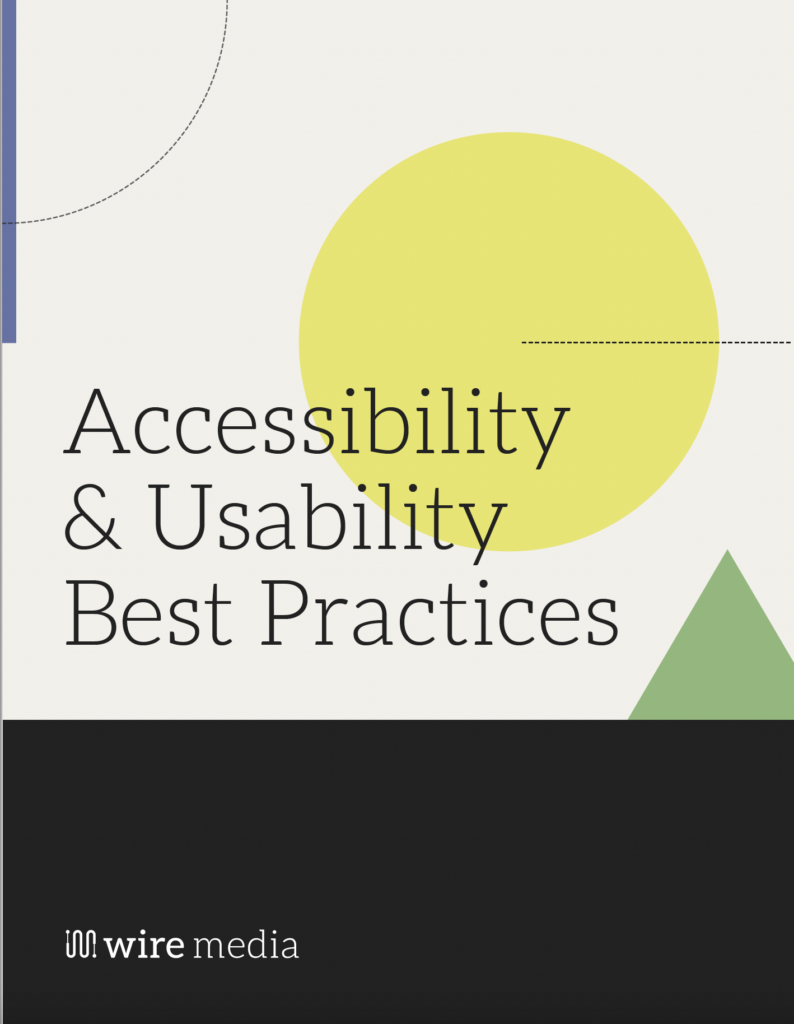
When you think about building a website or creating digital content, you want as many people as possible to access and enjoy what you’ve built. But what if some people can’t use your site because they have a disability?
This is where accessibility compliance comes in.
Accessibility compliance ensures that websites and digital content are usable by everyone, including people with disabilities. There are different levels of accessibility compliance — A, AA, and AAA. Each level represents how accessible your content is and how many barriers you’ve removed for users with disabilities.
Let’s break down what each level means and why you might choose one level over another.

Get our guide on how to start making your website available to everyone.
Get the GuideWhat Are the Levels of Accessibility Compliance?
The levels of accessibility compliance are defined by the Web Content Accessibility Guidelines (WCAG), a set of standards created by the World Wide Web Consortium (W3C). These guidelines help make the web more accessible to everyone, regardless of their abilities.
- Level A: This is the most basic level of accessibility. It includes the minimum requirements that must be met to make content accessible. If a website or content meets Level A, some people with disabilities can use it. But there might still be barriers that make it difficult for others.
- Level AA: This is the middle level of accessibility. Meeting Level AA means that your content is accessible to a wider range of people with disabilities, including those with moderate to severe disabilities. This level addresses the biggest and most common barriers to accessibility.
- Level AAA: This is the highest level of accessibility. To meet Level AAA, your content must be accessible to the widest range of users, including those with significant disabilities. However, it’s important to note that not all content can realistically meet Level AAA. Some content just isn’t practical to make fully accessible at this level.
What level do you need?
Understanding who the different levels of accessibility compliance are for can help you decide which level is best for your organization.
Level A: Basic Accessibility
Level A is for organizations that are just starting with accessibility and want to make sure they meet the minimum standards. It’s a good first step for ensuring that your content is accessible to some users with disabilities, but it’s not enough on its own. Here are examples of the type of group that would consider Level A:
- Small nonprofits with limited resources or time.
- Organizations that are new to accessibility and want to start with the basics.
- Groups that have a very narrow or specific audience.
Level A ensures that your content isn’t completely inaccessible, but there may still be significant barriers for many users.
Level AA: The Gold Standard
Level AA is often considered the “gold standard” of accessibility. It balances making your content accessible to a wide range of users without requiring the more complex and expensive changes needed to meet Level AAA. Who Might Choose Level AA?
- Most nonprofits, especially those with a diverse audience.
- Organizations with a commitment to inclusion and accessibility.
- Groups that want to comply with legal requirements, as many accessibility laws (like the ADA in the United States) often refer to Level AA compliance.
Meeting Level AA means your content will be accessible to a large percentage of users with disabilities. It’s a good balance between being accessible and being realistic about the resources you have.
Level AAA: Maximum Accessibility
Level AAA is for organizations that want to go above and beyond in making their content accessible. This level requires you to address even the smallest barriers to accessibility, which can be challenging. Who Might Choose Level AAA?
- Large nonprofits with significant resources and a strong commitment to accessibility.
- Organizations that serve people with severe disabilities or those that want to be leaders in accessibility.
- Groups that create content where full accessibility is critical (e.g., educational materials for people with disabilities).
Level AAA compliance is ideal if your audience includes people with a wide range of severe disabilities and you want to make sure that your content is as accessible as possible.
Is one option better than another? Well, it depends.
Choosing the right level of accessibility compliance depends on your audience, your resources, and your goals as an organization. Here’s why you might choose one level over the others:
- Resources: Level A requires fewer resources, while Levels AA and AAA may require more time, money, and expertise. If your nonprofit has limited resources, starting with Level A and working toward Level AA might be a good approach.
- Audience: Consider who your audience is. If your content is for the general public, Level AA is a good target because it makes your content accessible to the most people. If you serve a community with severe disabilities, Level AAA might be more appropriate.
- Legal Compliance: In some places, the law might require a certain level of accessibility. Many laws and regulations reference Level AA, so aiming for this level can help you avoid legal issues.
- Mission and Values: If your nonprofit is committed to inclusion and equity, aiming for higher levels of accessibility compliance shows that you value all users, including those with disabilities.
Final Word
Accessibility compliance is about more than just meeting a legal requirement. It’s about making sure everyone, regardless of ability, can access and enjoy your content. By understanding the differences between Level A, AA, and AAA, you can make informed decisions about how to best serve your audience. Whether you’re just starting with Level A or aiming for the highest standards, every step you take makes the web a more inclusive place for everyone.